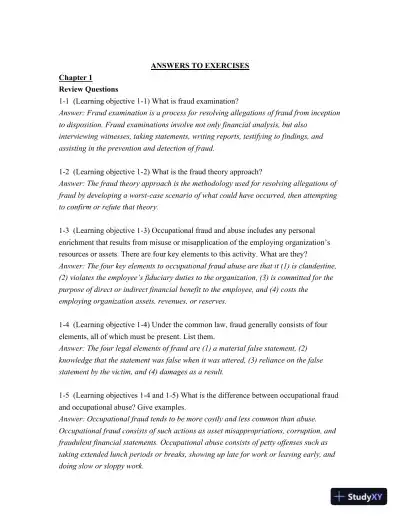Page 1

Loading page ...
Need help with textbook exercises? Principles of Fraud Examination 4th Edition Solution Manual offers comprehensive solutions that make studying easier.

Loading page ...
This document has 88 pages. Sign in to access the full document!